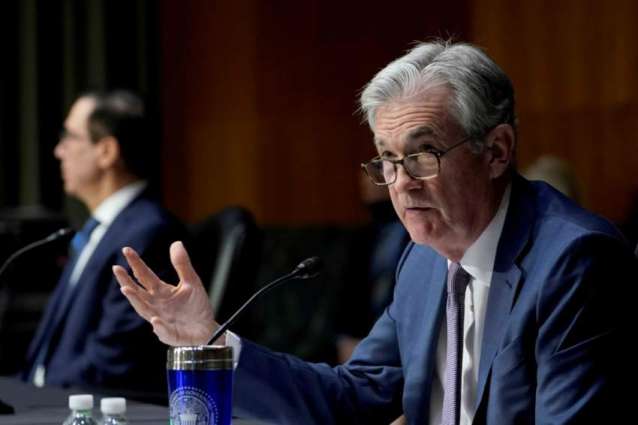Two Federal Reserve advocates of tighter monetary policy on Friday told US banks to be prepared for the risk of more interest rate increases, dispelling the notion that the US central bank's decision to pause rate hikes in June could be long term
WASHINGTON (Pakistan Point News / Sputnik - 16th June, 2023) Two Federal Reserve advocates of tighter monetary policy on Friday told US banks to be prepared for the risk of more interest rate increases, dispelling the notion that the US central bank's decision to pause rate hikes in June could be long term.
"The Fed's job is to use monetary policy to fight inflation and the job of bank leaders is to deal with interest rate risk," Federal Reserve Bank of St. Louis Chairman Christopher Waller said.
On Wednesday, the Fed decided to skip a hike in interest rates for the month of June after ten increases over the past 15 months. However, the Fed cautioned it could resume its monetary tightening in July if inflation warrants such a move.
The Fed's projection for peak interest rates stood at 5.75% for this year versus the current high of 5.25%. Given its established pace of a 0.25% hike at each rate review since late last year, the Fed could initiate anther two increases.
The US financial system was rocked by several high-profile bank failures triggered by the March collapse of California's Silicon Valley Bank (SVB) after massive withdrawal of money by depositors. Regulators later blamed the crisis on poor risk management by banks rather than Fed action on interest rates.
Waller said he disagreed with the notion expressed by economists that banks could be more vulnerable if interest rates kept going higher as credit conditions could be drastically impaired.
"It is still not clear that recent bank failures had a material effect on credit conditions," he said.
Waller suggested that banks owned their failures, not the Fed, and the changes in credit since the SVB failure are in line with what was happening before.
Federal Reserve Bank of Richmond Chairman Thomas Barkin was in step with Waller when he said there should be more tightening to curb inflation, which many policy-makers at the US central agree is still too high.
"I'm comfortable doing more on rates if incoming data doesn't confirm a story that slowing demand is returning inflation to the 2% target," Barkin said. "Inflation has proved stubbornly persistent and I am still looking to be convinced that weakening demand will control it."
While the higher interest rates may create the risk of a more significant slowdown of the economy, Barkin said the Fed's experience of the 1970s showed it "should not back off its inflation fight too soon."
Inflation skyrocketed in March 1973 when President Richard Nixon disengaged the dollar from the gold standard. Prices rose from 4.7% to 12.3% in December 1974. The Fed, in response, hiked rates from 7% in March to 11% by August.
Waller said he found it particularly disturbing that core inflation - a component of the CPI that disregards volatile energy and food prices - is not moving down and will probably require some more tightening.
"Core inflation is not coming down like I thought it would," he said.
As a concession, Waller said he was pleased that the labor market was softening even without much rise in unemployment.
However, Barkin noted some ambiguity over the correlation between higher spending/labor growth with inflation, saying there was still a "question whether inflation can settle while higher-income consumers continue spending and the labor market remains robust."
The labor market is the juggernaut of the US economy, adding hundreds of thousands of jobs a month over the past three years after initially losing 20 million to the COVID-19 pandemic measures.
While policy-makers the world over typically celebrate on seeing good jobs numbers, the Fed is in a different predicament. The central bank wishes to see an easing of conditions that are a little "too good" now for the economy's own good - in this case, unemployment at more than 50-year lows and average monthly wages that have grown without stop since March 2021.
Such job security and earnings have cushioned many Americans from the worst price pressures since the 1980s and encouraged them to continue spending, further feeding inflation.
The Fed has a mandate of ensuring "maximum employment" through a jobless rate of 4% or below and keeping inflation "manageable." The last was a task easily achieved before the COVID-19 breakout, when prices expanded less than 2% per year. The pandemic measures and the trillions of dollars of relief spending by the government, however, triggered runaway inflation since mid-2021.




